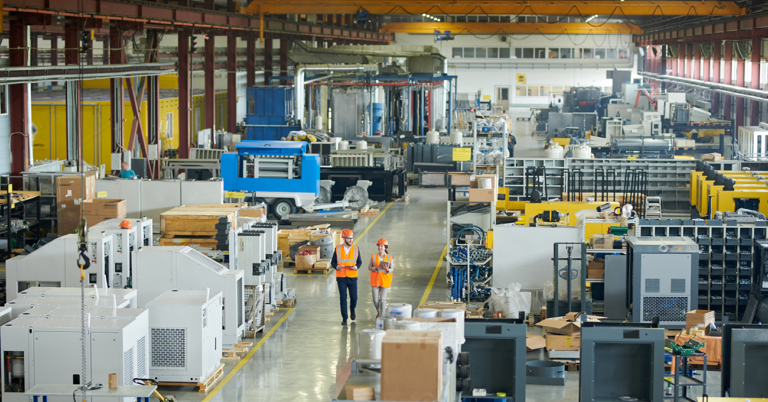Discrete manufacturing usually involves assembly lines or processes where parts are assembled or manufactured to produce finished products. Examples of discrete manufacturing include the production of cars, electronics, appliances, machinery and consumer goods. The items produced are unique and can be counted or identified as individual units.
Just as RTLS is transforming workplaces and hospitals, indoor positioning technology will redefine the way we approach manufacturing processes. Drawing on my own experience in this area, I want to share with you the five benefits that await you and how these advances could fundamentally transform discrete manufacturing.
1. Enhancing Efficiency in Operations
The use of indoor positioning technology in discrete manufacturing can significantly streamline workflows. By providing real-time data on the location of equipment, materials and personnel, decision-makers can optimise workflows and reduce downtime. Searching for a specific tool in a large manufacturing facility can be time-consuming, but with an indoor locating system, tools can be tracked and found within seconds, saving valuable time and increasing productivity.
Additionally, location-based services allow manufacturers to automate inventory tracking, which traditionally requires manual input and is prone to human error. With accurate location data, inventory levels can be continuously monitored. This ensures that materials are replenished when needed and production is not interrupted due to shortages. This level of efficiency is critical to remaining competitive.
2. Optimising Asset Utilisation
Asset management is an important part of discrete manufacturing, and indoor positioning systems play a critical role in maximising asset utilisation. By tracking the movement and utilisation of machines and equipment, manufacturers gain insight into their performance and maintenance needs. This enables proactive maintenance planning that not only extends asset and equipment life but also prevents unexpected breakdowns that can lead to costly production delays.
Understanding how assets and equipment are used throughout the manufacturing process will also help you identify optimisation opportunities. For example, if certain equipment is underutilised, it can be reallocated to areas of higher demand to ensure that every asset and each piece of equipment is used to its full potential. This strategic approach to asset management can lead to significant cost savings and a better return on investment.
3. Improving Workplace Safety
Safety is paramount in any manufacturing environment, and indoor locating technology contributes to creating a safer workplace. By monitoring employees’ positions in real time, the system can alert supervisors if an employee enters a hazardous area or if there is a potential for a dangerous situation, such as a collision between personnel and moving equipment. This immediate awareness enables rapid intervention to prevent accidents and injuries.
In addition to preventing accidents, indoor locating systems can also enable a faster response in an emergency. In the event of an incident, emergency responders can quickly locate the affected person, reducing response time and potentially saving lives. By improving safety measures, manufacturers not only protect their employees, but also minimise the risk of production downtime due to safety-related incidents.
4. Facilitating Data-Driven Decision Making
Data is a powerful tool for improving manufacturing processes, and indoor positioning systems provide a wealth of valuable data. By analysing the movement patterns of assets and personnel, manufacturers can identify bottlenecks and inefficiencies in their operations. This data-driven approach enables informed decision-making, where changes to the production layout or process can be made based on solid evidence rather than guesswork.
In addition, integrating location data with other systems, such as Enterprise Resource Planning (ERP) or Manufacturing Execution Systems (MES), can provide a holistic view of the manufacturing process. This integration allows manufacturers to fine-tune their operations, reduce waste, and improve overall productivity—all based on accurate and timely data.
5. Enabling Customisation and Scalability
One of the main advantages of indoor locating technology is its adaptability to the unique needs of each manufacturing facility. For example, Quuppa solutions can be customised to the specific layout and requirements of a facility to ensure that the solution is effective and adds value from day one. As the manufacturer needs to evolve, the system can be scaled up or adjusted to accommodate new processes or expansions, making it a future-proof investment.
Additionally, the system can be customised to achieve the level of precision required for different applications or extend to outdoor areas such as yards and loading docks. Whether a manufacturer needs sub-metre accuracy for intricate assembly work, zone-level accuracy or simply presence detection for warehousing, the system can be tailored to meet different needs. This flexibility ensures that manufacturers can utilise indoor positioning technology in the way that best suits their operational objectives.

